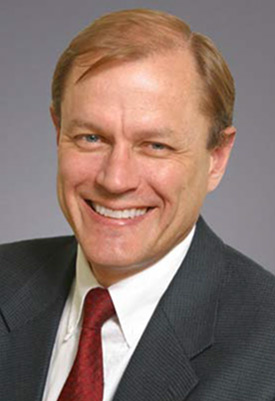
 Steve Huntoon | Steve Huntoon
Steve Huntoon | Steve HuntoonAround the middle of the massive FERC Notice of Proposed Rulemaking on transmission planning, etcetera, we come across a discussion of new technologies.
The NOPR says transmission planning will be improved with the use of dynamic line ratings and other “grid enhancing technologies” (GETs).[1]
Dynamic Line Ratings
It’s hard to see how this can be so. Dynamic line ratings are very important for reducing congestion, as I discussed back in 2019.[2] But they can’t relieve reliability violations — arising from future system conditions or from interconnecting new generation.
Planning is based on worst-case system conditions. Dynamic line ratings can be used to increase dispatch of lower cost resources when temperature and other ambient conditions are better than worst case. But they can’t make the worst-case planning topology better. It’s that simple.
The only apparent use of dynamic line ratings in planning would be this scenario: Assume multiple potential solutions to a reliability violation. Maybe a more expensive solution would be better if its incremental production cost savings outweigh its incremental solution cost. The odds of this happening in practice are slim to none, and Slim left town.
Transmission line ratings that are relevant to planning, including generator interconnection, are unique emergency (contingency) ratings. In its December rulemaking requiring use of ambient-adjusted ratings, FERC also required unique emergency ratings for operations/dispatch, but did not do so for planning/interconnection studies.[3]
But the latter is what matters to save consumers from transmission overbuild, and to save renewable generators from unnecessary costs and delays. FERC did not address the expert engineering comments in that proceeding,[4] creating the irony of higher emergency ratings for operations than for planning.
FERC did not address this subject, yet again, in this NOPR.
Other ‘Grid Enhancing Technologies’
The NOPR also mandates consideration of other “grid enhancing technologies,” which beside DLRs, are specified as “advanced power flow control devices.” As with DLRs, such devices have little, if anything, to do with increasing grid capacity. In looking at the study[5] supposedly supporting the planning/interconnection value of GETs, I can’t find anything relevant. The study at different points refers to planning but then says “GETs focus on operational improvements,”[6] and the value proposition seems limited to improved dispatch.[7] Not planning/interconnection.
What technologies actually do increase grid capacity for planning/interconnection purposes? Technologies that increase physical capacity of grid elements such as those that the Electric Power Research Institute has identified.[8] These include simple things like sag studies to identify possible retensioning and tower raising, and more sophisticated technologies like reconductoring with advanced conductors[9] and applying high-emissivity conductor coatings.[10] None of these are discussed in the NOPR.
Bottom Line
In the worthy endeavor to increase grid capacity and increase renewable interconnections, the NOPR is pushing the wrong set of technologies.
Columnist Steve Huntoon, principal of Energy Counsel LLP, and a former president of the Energy Bar Association, has been practicing energy law for more than 30 years.
[1] Docket No. RM21-17-000, ¶ 267-277, issued April 21, 2022.
[4] https://elibrary.ferc.gov/eLibrary/filedownload?fileid=020C3BCD-66E2-5005-8110-C31FAFC91712. And I addressed this toward the end of my column in footnote 2.
[5] https://watt-transmission.org/wp-content/uploads/2021/02/Brattle__Unlocking-the-Queue-with-Grid-Enhancing-Technologies__Final-Report_Public-Version.pdf90.pdf (cited in the NOPR at footnote 437).
[6] Slide 23.
[7] Slide 26.
[9] A recent study on reconductoring is here, https://acore.org/wp-content/uploads/2022/03/Advanced_Conductors_to_Accelerate_Grid_Decarbonization.pdf.
[10] Per an Oak Ridge National Laboratory study of conductor coating: “a coated conductor affords approximately a 20% increase in ampacity when operating at the same temperature as an uncoated conductor.” https://info.ornl.gov/sites/publications/Files/Pub138393.pdf (pdf page 10).

